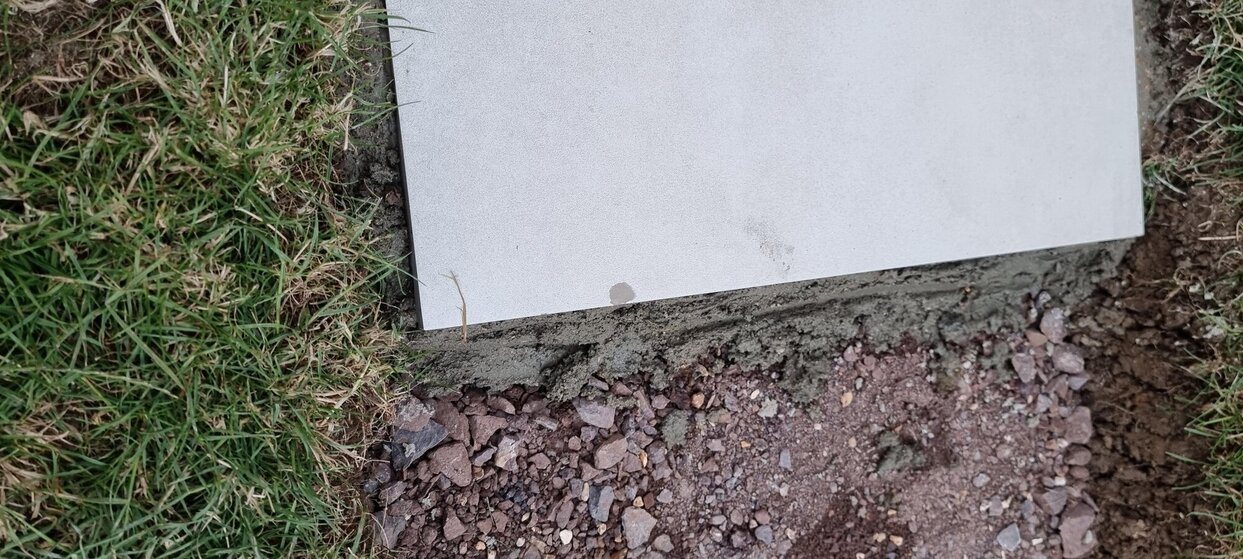Tile chips can be a frustrating occurrence, detracting from the aesthetic appeal of your tiled surfaces. Whether caused by accidental impacts, shifting grout, or wear and tear over time, these imperfections can compromise the integrity and visual harmony of your tiles.

Image: www.tilersforums.com
Fortunately, fixing tile chips is not as daunting as it may seem. With the right materials, techniques, and a touch of patience, you can restore your tiled surfaces to their former glory. In this comprehensive guide, we will delve into the intricacies of tile chip repair, empowering you with the necessary knowledge and step-by-step instructions to fix these chips effectively and efficiently.
Types of Tile Chips and Their Causes
To determine the best approach to fixing a tile chip, it is essential to understand its type and the underlying cause. There are two main types of tile chips:
- Surface Chips: These are shallow chips that involve only the top layer of the tile, known as the glaze. They are typically caused by scratches from hard objects or moderate impacts.
- Deep Chips: These are more severe chips that penetrate beyond the glaze and potentially reach the tile body. They are primarily caused by heavy impacts or structural issues, such as loose grout or shifting tiles.
Identifying the cause of the tile chip is crucial for preventing future occurrences. Common causes include:
- Accidental Impacts: Dropping heavy objects or hitting the tiles with sharp or blunt objects can cause chips.
- Weak Grout: Grout that is not properly applied or has deteriorated can allow tiles to shift, leading to chips upon contact.
- Structural Issues: In rare cases, structural problems in the underlying surface can exert pressure on tiles, causing them to chip.
Materials and Tools Required
Before embarking on the tile chip repair process, gather the following materials and tools:
- Tile chip repair kit or epoxy resin
- Color-matched grout
- Grout float
- Putty knife or plastic scraper
- Soft cloth
- Sandpaper (optional)
- Safety glasses
- Gloves
Step-by-Step Guide to Fixing tile Chips
Once you have the necessary materials and tools, follow these steps to fix tile chips:

Image: www.youtube.com
1. Clean and Prepare the Area
Thoroughly clean the chipped area with a damp cloth to remove any dust or debris. Allow it to dry completely before proceeding.
2. Apply the Tile Chip Repair Kit or Epoxy Resin
For surface chips, use a tile chip repair kit. Apply the adhesive to the chipped area and work it into the gap using the putty knife. For deep chips, use epoxy resin. Mix the epoxy according to the manufacturer’s instructions and apply it to the chipped area, ensuring it fills the entire depth of the chip.
3. Level and Smooth the Surface
Use the putty knife or a small piece of cardboard to level and smooth the surface of the repair. Avoid overworking the material, as this can create surface bubbles.
4. Allow the Repair to Cure
Follow the manufacturer’s instructions on the proper curing time for the repair material. Most tile chip repair kits or epoxy resins require several hours or overnight to fully cure.
5. Sand and Grout the Repair (Optional)
For surface chips, lightly sand the repaired area using fine-grit sandpaper to create a smooth, even surface. Then, apply color-matched grout over the repair using a grout float. Allow the grout to set according to the manufacturer’s instructions.
Expert Insights and Actionable Tips
To enhance your tile chip repair skills, consider these insights from tile industry experts:
- Match the Grout Color: Use grout that matches the color of your existing grout to ensure a seamless repair.
- Use a Bonding Agent: For repairs on glazed tiles, apply a bonding agent to the chipped area before applying the repair material. This will improve adhesion and prevent the repair from chipping again.
- Test the Repair Material: Before applying the repair material to the actual chipped area, test it in an inconspicuous location to ensure compatibility.
- Protect Your Eyes and Hands: Always wear safety glasses and gloves when working with tile adhesives and epoxy resins.
How To Fix Tile Chips
Conclusion
Repairing tile chips is an attainable task that can restore the beauty and functionality of your tiled surfaces. By understanding the types of tile chips, their causes, and the proper repair techniques, you can tackle these imperfections effectively. Remember to prioritize safety, use high-quality materials, and follow the steps outlined in this guide. With patience and care, you can restore the integrity and aesthetic appeal of your tiled surfaces, giving them a new lease on life.
If you encounter any difficulties or have concerns about the severity of the tile chips, do not hesitate to consult a qualified tile contractor for professional assistance.